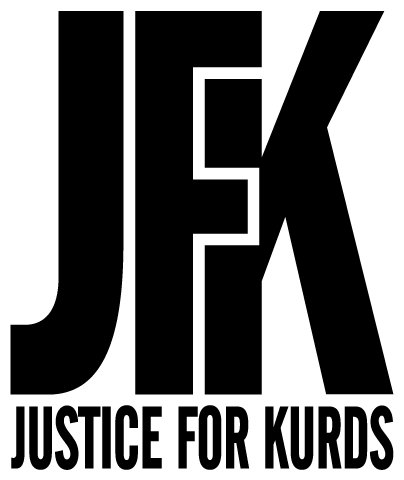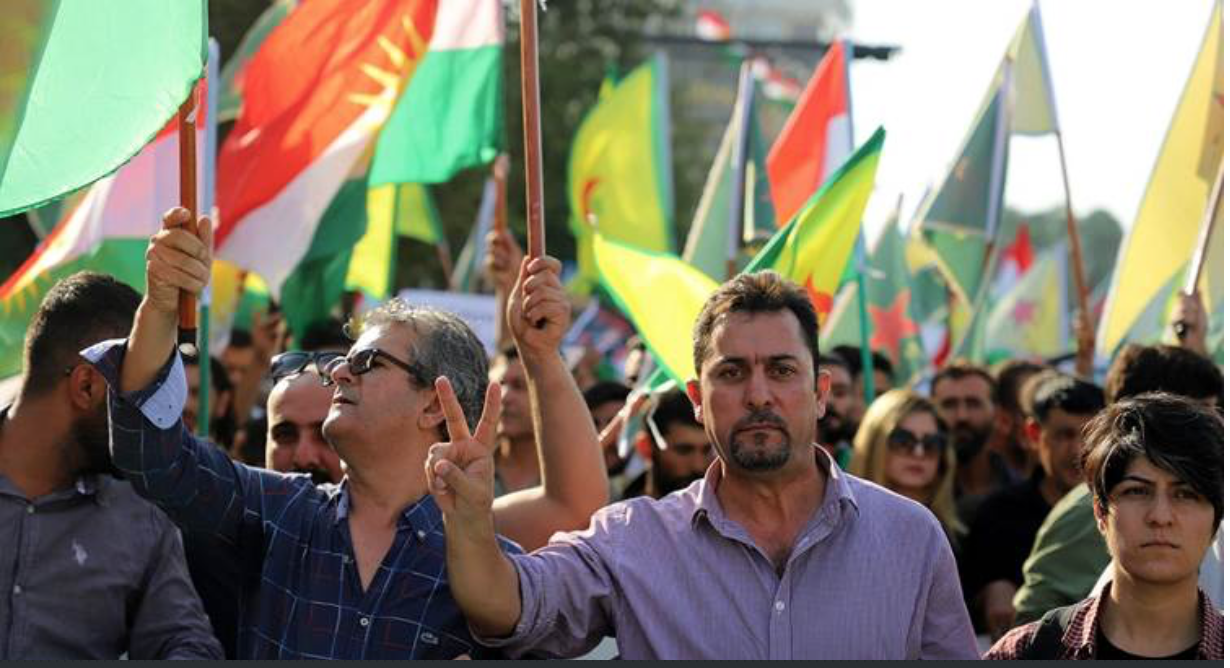AKCAKALE, Turkey — Turkish-led troops made the first significant strategic breakthrough of their invasion of the Kurdish-held region of Syria on Saturday morning, entering a border town that had been the focus of a ground war between Turkey and Kurdish fighters since Wednesday.
The Turkish Defense Ministry announced that its forces had taken part of the town, Ras al-Ain, which nestles up to the border with Turkey on a road connecting the eastern and western wings of Kurdish-held territory. If they capture the entire town, the Turkish forces would control one of the two main roads that link the major Kurdish-controlled cities, making it harder for Kurdish forces to move troops and supplies.
Footage broadcast on Turkish television showed members of a Syrian Arab militia, fighting under Turkish command, in the streets of the seemingly abandoned town. But Kurdish-led forces said they were still present in another part of Ras al-Ain.
Turkish troops and their Arab allies were pushing to take a second strategic border town, Tel Abyad, 75 miles to the west, and an advance group briefly reached a second major supply route, roughly 20 miles inside Syria, before quickly retreating. The Turkish government says its incursions have so far been relatively small, with soldiers holding territory only a few miles inside Kurdish territory. Its aerial bombardment has affected a much wider area.
The invasion, which entered its fourth day on Saturday, has compounded the complexity of the civil war in Syria, disrupted a campaign to drive out the Islamic State from Northern Syria, prompted a new wave of displacement and put at risk American troops working with the Kurds on counterterrorism missions.
The invasion has prompted a threat of crippling United States sanctions and a wave of international criticism — the latest from the German foreign minister, Heiko Maas, who on Saturday announced that his country would block future exports of weapons that could be used by Turkey in Syria.
Turkey says it wants to create a buffer zone from the border into Syrian territory that is controlled by a Kurdish-led militia. The militia has close links to a guerrilla movement that has been fighting a decades-long insurgency against the Turkish state.
But that has upended efforts to contain the Islamic State, also known as ISIS, which seized large swathes of Syrian land amid the turmoil of the early years of the Syrian civil war. The ISIS militants were later forced from northern Syria by the Kurdish militia, in partnership with American troops.
But distracted by the invasion, the Kurdish authorities have diverted resources away from counterterrorism operations, leaving their territory more vulnerable to the sleeper cells of a resurgent ISIS.
“We are now fighting on two fronts — one front against the Turkish invasion and a front against” the Islamic State, a Kurdish military official, Redur Xelil, said at a news conference on Saturday afternoon in Al Hasakah.
The extremist group has already claimed responsibility for a car bomb in Qamishli, the regional capital, that exploded on Friday. A second car bomb exploded in the early hours of Saturday in the city of Al Hasakah, outside a prison containing Islamic State militants.
The Kurdish authorities are guarding 11,000 Islamic State fighters and their families, but the already limited ability to secure them is now under further threat. Turkish airstrikes near a prison in Qamishli on Friday allowed five Islamic State prisoners to escape Kurdish custody.
Relatives of Islamic State fighters attempted a second breakout from a camp farther to the south, but were caught, the Kurdish authorities said.
The Syrian government also used the opportunity to attack Kurdish-held territory near Manbij, government and Kurdish officials said on Saturday.
United States troops fell under Turkish artillery fire on Friday night, the Pentagon confirmed, escalating a disagreement between American and Turkish officials about the scale and scope of the invasion.
American troops had vacated part of northern Syria around Ras al-Ain earlier in the week, giving implicit approval for a Turkish invasion of that area.
But United States forces remain in other parts of Kurdish-held Syria to continue counterterrorism operations against the Islamic State, and they have opposed expanding the Turkish invasion beyond a sliver of land at the center of Kurdish-held territory.
That has failed to deter the Turkish Army from bombarding Kurdish-run cities all along the border, endangering American troops posted there.
On Friday night, the Pentagon announced that a group of American troops had narrowly avoided being hit by Turkish artillery fire in Kobani, a border city in the west of Kurdish-held territory, despite providing their coordinates to Turkish counterparts.
United States military officials said privately that they are convinced that Turkish forces had deliberately targeted the area to encourage the American military to leave the area altogether.
“The Turks knew we were there,” said one American officer who has served in northeastern Syria and who has access to confidential intelligence reports on the Turkish offensive. The officer said the Turks wanted the United States personnel moved south of a major highway that connects western and eastern Kurdish cities to allow Turkish forces unrestricted access to the road.
The Turkish Defense Ministry acknowledged that shells had fallen near American forces, but said its troops had been aiming at Kurdish fighters in the area.
The bombardments have spurred a fresh wave of displacement, with more than 100,000 residents of Kurdish-held Syria fleeing south, away from the Turkish border, according to United Nations estimates.
On Saturday, a group of Turkish men played cards and smoked in a cafe in the Turkish border town of Akcakale, some 75 miles west of Ras al-Ain, as news of the capture of the Syrian town played on television.
“We are happy about it,” said one man who identified himself only as Mehmet, watching as his friends slapped down cards. “God willing, Tel Abyad will be like that in 48 hours,” he added, referring to the town across the border from Akcakale. “We trust in the Turkish Army, and we believe in them.”
Other people in Akcakale said that scores of Turkish-backed Syrian fighters had moved through the town with heavy weaponry to bolster the offensive against Tel Abyad on Friday. They said that they expected a renewed push to take the town after the incursion into Ras al-Ain.
Kurdish-led militias also fired several mortars into Akcakale midmorning, but fell quiet as Turkish artillery pounded their positions in Tel Abyad steadily into the early afternoon.
Some residents of Turkey have moved away from the border to escape retaliatory fire from Kurdish mortars. The Turkish town of Ceylanpinar, which lies across the border from Ras al-Ain, was evacuated on Friday after at least two civilians were killed there by Kurdish mortar fire. At least 15 civilians have died in other Turkish towns.
Over all, at least 14 civilians in Kurdish-run towns have died and 60 other injured since Wednesday, according to the Kurdish Red Crescent.
More than 50 Kurdish and 40 Turkish-led fighters have also been killed, according to the Syrian Observatory for Human Rights, a monitor based in Britain.
Carlotta Gall reported from Akcakale, and Patrick Kingsley from Istanbul. Eric Schmitt contributed reporting from Washington; Ben Hubbard from Dohuk, Iraq; Hwaida Saad from Beirut, Lebanon; and Karam Shoumali from Berlin.

